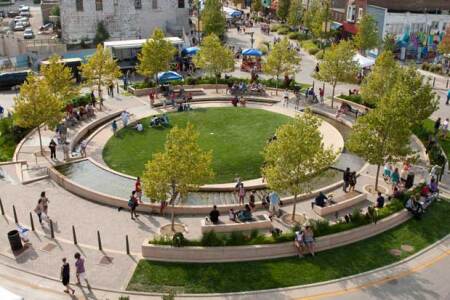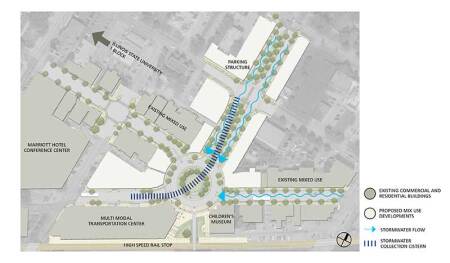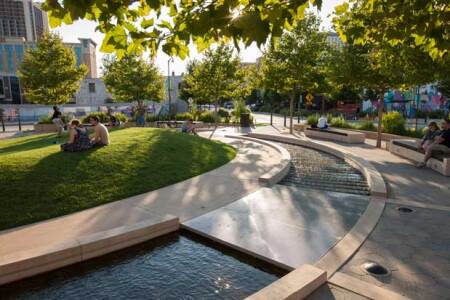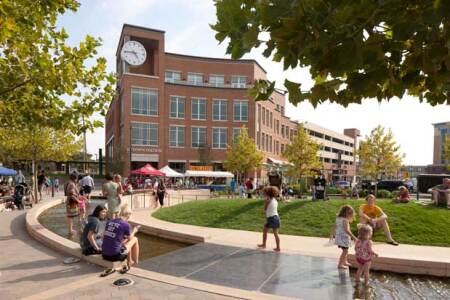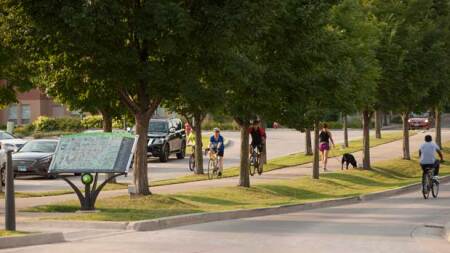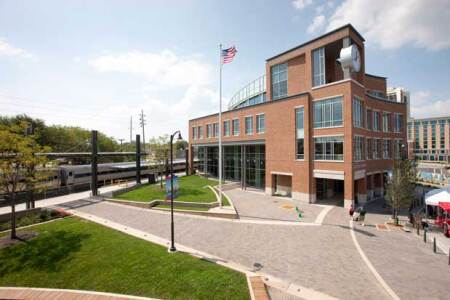This summer, Urban Land is profiling online and in print each finalist for 2020’s ULI Urban Open Space Award. The winner(s) will be announced in the fall. Learn more about award-winning and innovative open-space projects as part of the 2020 ULI Virtual Fall Meeting.
Owner: Town of Normal, Illinois
Designer: Hoerr Schaudt Landscape Architects
Additional team members: Farnsworth Group, Clark Dietz, CMS Collaborative, Hey & Associates, James Urban, Charter Sills, Jeffery L. Bruce, Landtech, Farr Associates
Size: 5 acres (2 ha) for total project area; 0.4 acres (0.16 ha) for Uptown Circle
Opened: June 2010
Total cost: $15.5 million (excluding land acquisition)
Following the adoption of a long-range, environmentally focused downtown master plan for the town of Normal, Hoerr Schaudt was hired as lead designer for public realm improvements across the town’s central business district. The project area was significant for numerous reasons: an abandoned railway bifurcated the historic downtown core and impeded retail traffic; the municipality wanted to attract private investment to increase density near an adjacent transit station; the town lacked significant public space; and Normal wanted to leverage transportation and stormwater infrastructure improvements in reconceiving its historic corridor.
The result was the Circle, a signature civic green space whose verdancy radiates into connecting streetscapes. Once-barren corridors are now lined with 104 mature caliper trees with vivid understory plantings that collect, treat, and recharge groundwater. A modular, suspended pavement system works in tandem with the Circle to mitigate 1.4 million gallons (5.3 million liters) of stormwater annually. Reclaimed and treated stormwater is a central design element that anchors an event lawn used year-round for festivals and parades, and caroling during the holidays.
The Circle created a galvanizing brand identity for Uptown Normal, drawing community and economic interest: between 2009 and 2015, retail sales increased by 46 percent, with property values increasing by 205 percent. The redevelopment demonstrates how smart public space design can meet multiple municipal goals and revitalize a central business district.

